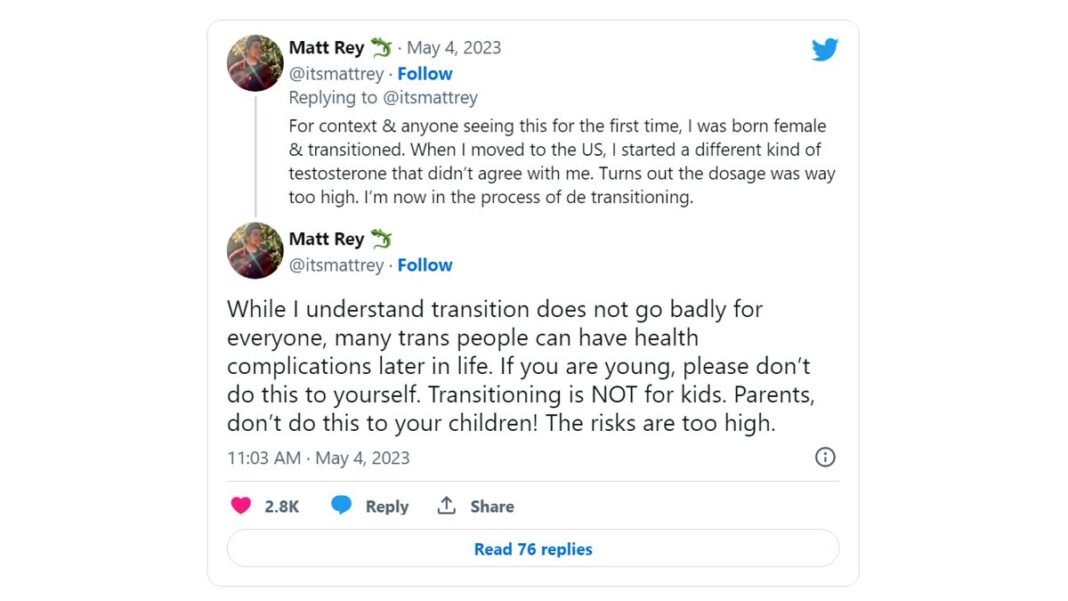Wearing a black cowboy hat, a red “America First” T-shirt, and a silver cross, you would never know Matt Rey was born female.
At 24, Rey transitioned from female-to-male (FTM). Now 32, Rey is experiencing serious health complications resulting from an overprescription of testosterone and a mastectomy.
Rey is part of a growing number of “detransitioners” returning to the gender of their birth—now warning youth considering “gender-affirming care” not to do it. “While I understand transition does not go badly for everyone, many trans people can have health complications later in life. If you are young, please don’t do this to yourself. Transitioning is NOT for kids. Parents, don’t do this to your children! The risks are too high,” Rey wrote on Twitter.
“Gender-affirming care,” which includes the administration of hormones and sex reassignment surgery, is claimed by advocates to save lives, however, this proposed remedy may actually be what’s driving the high mortality rate in the transgender community.
Authors of a recent Danish study of transgender suicide wrote: “Transgender individuals may be exposed to systemic negativity regarding their trans identity in the form of bullying, discrimination, exclusion, and prejudice, which in turn may result in alienation and internalized stigma, mental health problems, and, ultimately, suicidal behavior.”
The Lure of Incentivized ‘Gender-Affirming Care’
Rey experienced gender dysphoria at a young age. “When I was 5, my mom walked me over to the girls’ clothing section and she was looking at girly outfits. I was looking at the boys section, and wondering why she wasn’t taking me there,” Rey told The Epoch Times.
As a confused and isolated teenager, Rey looked to the internet for answers. FTM individuals who shared glamorous stories about transitioning convinced Rey that a new identity was the solution to happiness.
Turning to the gender identity clinic at the Tavistock Institute in the UK, Rey was surprised to learn that access to “gender-affirming care” was so easy—one visit with a primary doctor, two consultations at the gender identity clinic, then bloodwork—were all it took to begin the transitioning process.









